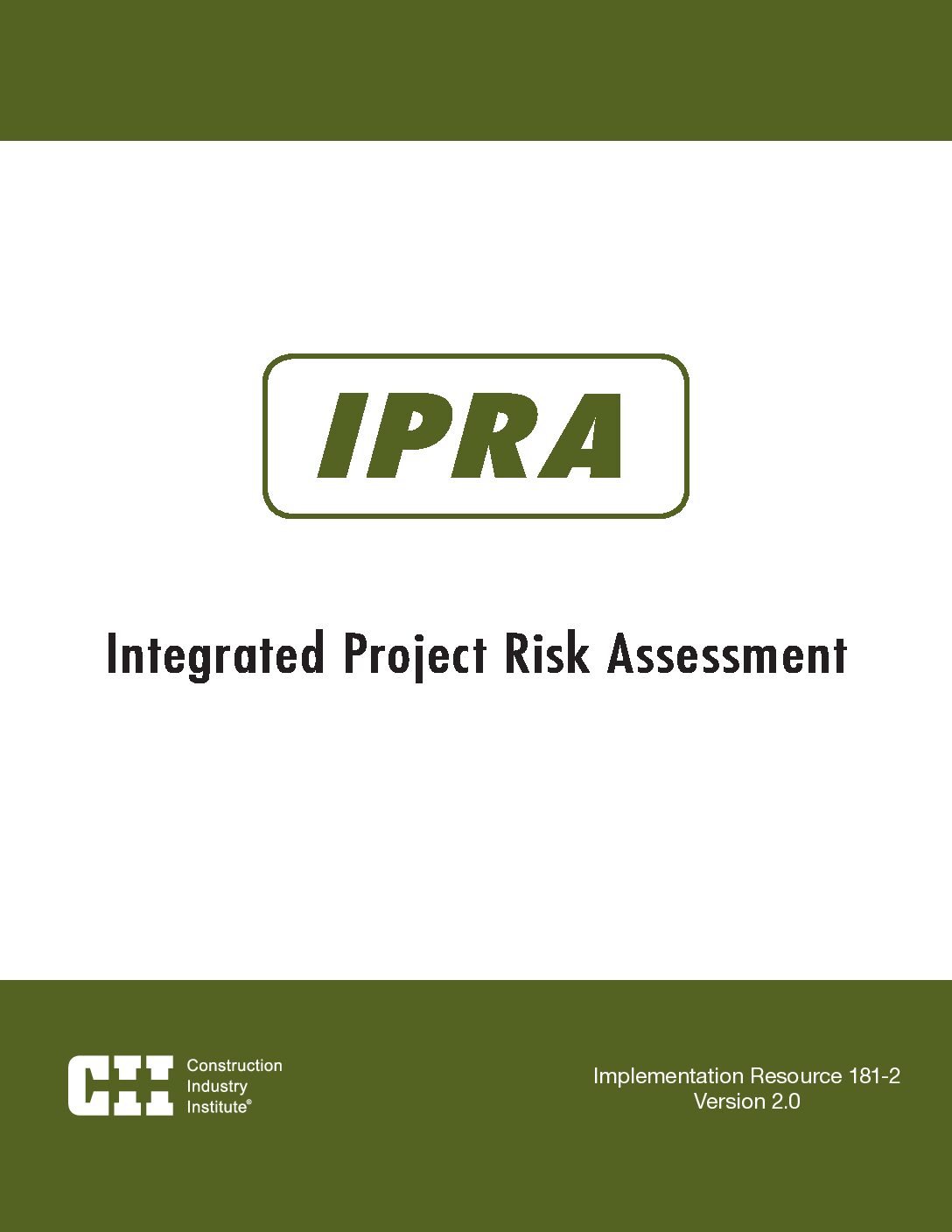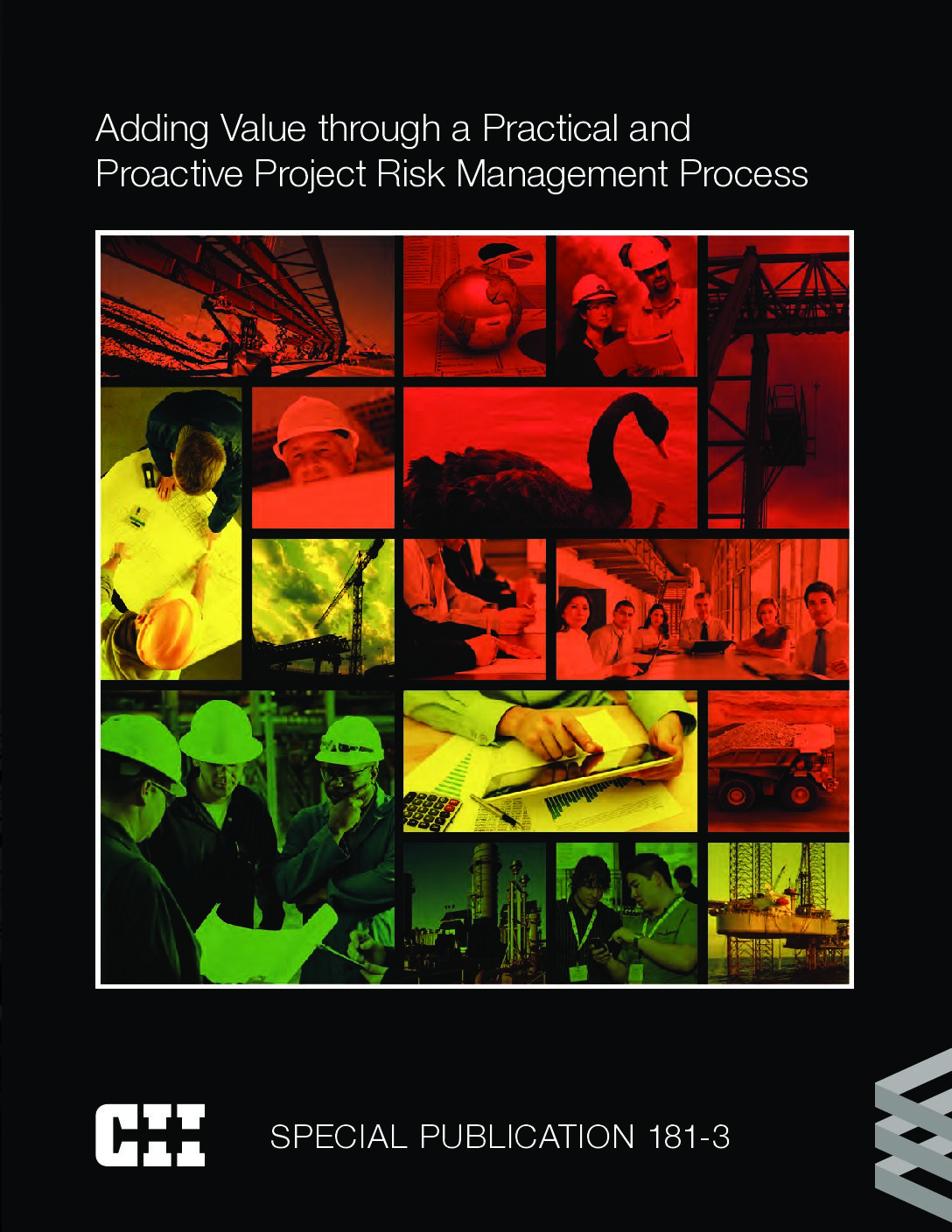The decision support tools outlined below were developed as part of rigorous research and development efforts supported by the Construction Industry Institute. Dr. Gibson was the brainchild of the IPRA tool and method in 2003, and developed the overview of the risk management process in 2012. Together our group has almost 50 years of experience looking at project risk management (PRM) of capital projects across a spectrum of industry sectors. If you have any questions about these tools, implementation of PRM, training, or for that matter any of the publications cited elsewhere in the site, please do not hesitate to contact one of us.
IR181-2 – Integrated Project Risk Assessment (IPRA), Version 2.0
Overview
When the IPRA was initially developed it was focused on international projects that were defined at the time as projects performed by North American investors, owners, and/or contractors, and located outside of North America. Originally titled International Project Risk Assessment, the tool is now called Integrated Project Risk Assessmentbecause in the intervening years CII found that it is applicable to and effective for a wider variety of projects. The Risk Management Integration Team found that the document’s title and write-up limited its adoption and was not indicative of actual practice. Moreover, it was apparent that the tool could be used for more than just risk assessment, and could be a cornerstone of an effective risk management process as outlined later in this document. To address these issues, the team produced this new edition.
The second edition of this risk assessment tool changes its title to reflect its applicability to a wider variety of projects than just “international” ones. This tool can be used for more than just risk assessment: it can serve as the cornerstone of an effective risk management process. The IPRA is uniquely suited to enable an integrated project team to identify, assess, and subsequently mitigate significant risks.
SP181-3 – Adding Value through a Practical and Proactive Project Risk Management Process
Overview
Many sources predict that the coming decades will bring a level of investment in capital facilities that is larger than all investment up to this point in history. Couple this increased level of investment with the impending retirement of the highly experienced Baby Boom generation, and the potential for project problems intensifies. Hence, pursuing a proactive and practical approach to project risk management is imperative.
The Construction Industry Institute (CII) has studied risk management and the risk management process since its founding in 1983. During this time, a number of the Institute’s research investigations have shown the value of establishing risk management programs; the research has also isolated key components of the risk management process. This document integrates the knowledge learned about risk management in the past three decades at CII, presenting the accumulated research as a practical and proactive process—with associated management actions—necessary to improve risk management in any organization. To support implementation of this process, it highlights all of CII’s risk management tools. Finally, because CII researchers and non-CII researchers alike use many words to describe risk and the process of risk management, it strives to present a common set of semantics around risk management. The hope is that, with this shared lexicon, thought leaders at CII and throughout the industry will be able integrate their further efforts to improve risk management in the near future.
Provides a high-level summary of three decades of CII research on risk management, introducing the terms, tools, and approaches fundamental to risk assessment and mitigation. Includes informative discussions of CII implementation resources related to risk management, e.g., tools such as the Project Definition Rating Index and Zero Accident Techniques.

